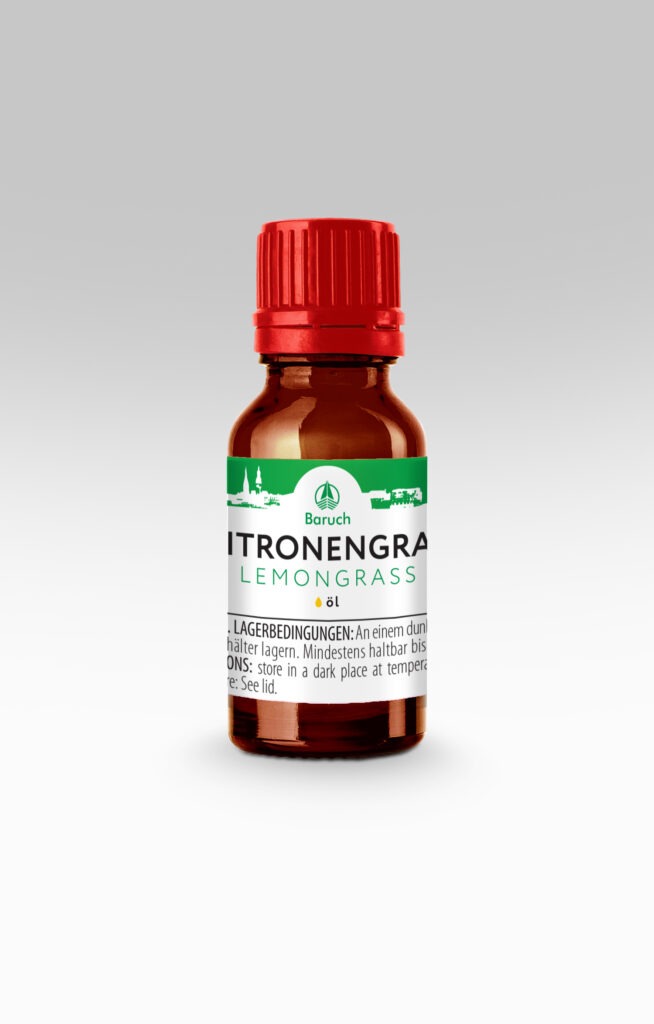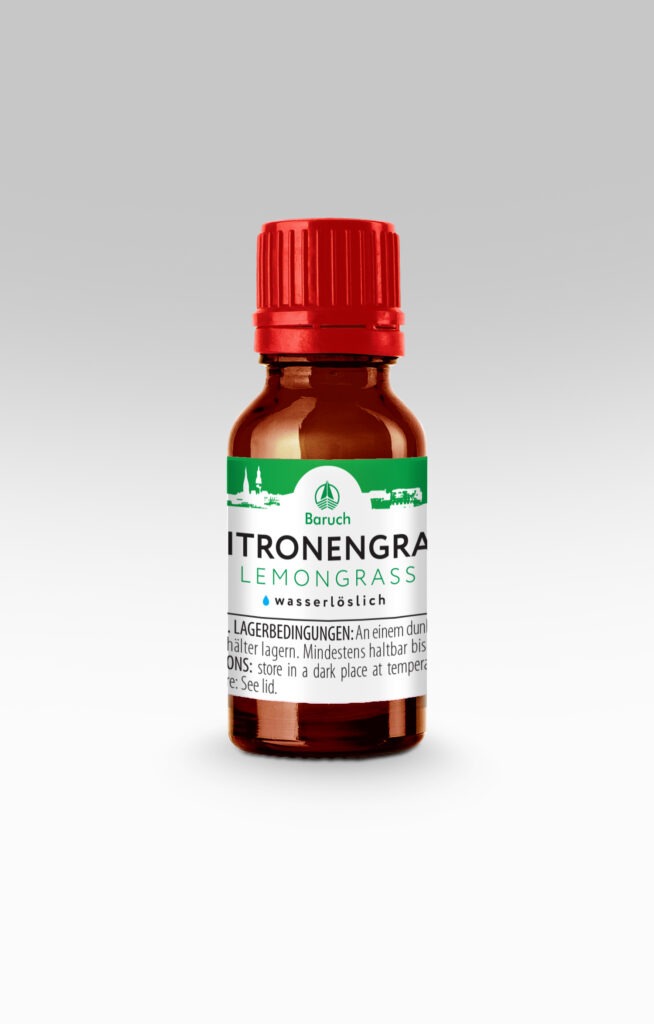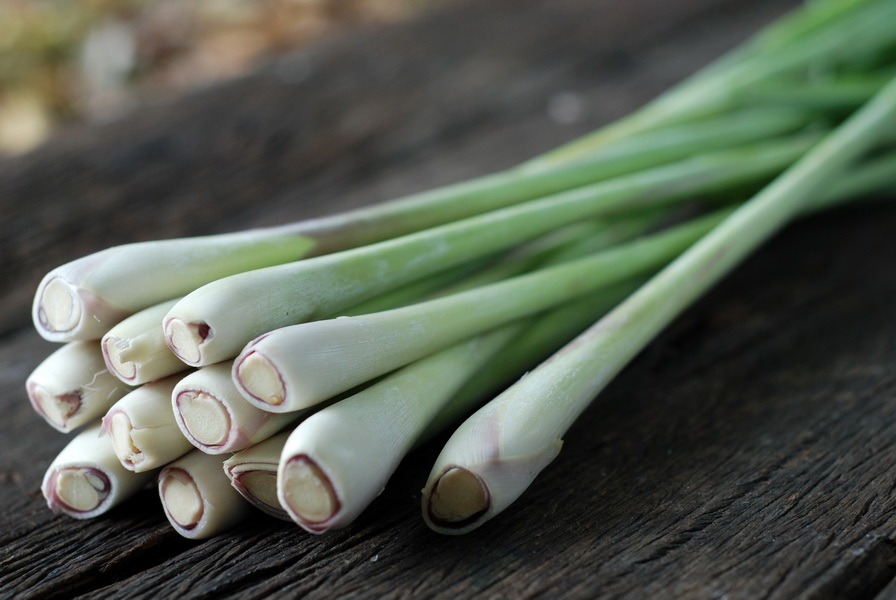Lemongrass is also called more precisely West Indian lemongrass, West Indian lemongrass, Guatemalan lemongrass or Sereh. The raw material for obtaining CO2 extract from lemongrass is the lower, hard, dried parts of the stems of the cymblogon, which are peeled from the leaves.
Lemongrass has been shown to be an antioxidant, antimicrobial, and fungicidal supplement. It stimulates the function of the gastrointestinal tract and the immune system, is a diuretic, supports the activity of the pancreas, relieves headaches and muscle pain, has a calming effect and is used in massage preparations. CO2 extract can be recommended as a remedy for relieving symptoms of laryngitis and bronchitis. CO2 extract from lemongrass has practically no contraindications for use except in the case of individual intolerance and during pregnancy.
Like fresh lemongrass stalks, the CO2 extract from lemongrass can be used in many ways in the kitchen, especially in Asian and Indian dishes. The mild citrus aroma and the slight ginger taste enhance the taste of soups, poultry, beef, fish and seafood. It is a very good flavoring agent for baked goods and confectionery. CO2 extract from lemongrass is very interesting as a flavoring substance for dry, spicy mixtures of paprika, salt, curries, marinades, pickles and liquid and pasty sauces such as mayonnaise and ketchup. This extract is very suitable for flavoring tea.
The CO2 extract from lemongrass has a distinctive lemon aroma with a floral nuance, depending on where it is grown, the nuance can change towards violet notes. The color is light yellow with a slight brownish tinge. The taste is sweet with a slight acidity and notes of ginger.
In the course of gas chromatographic-mass spectrometric investigations, several hundred compounds were analyzed in their composition, of which more than 40 were identified.


Chart 1. The main components of the CO2 extract of lemongrass
| NAME | CONTENT IN% OF THE AMOUNT OF VOLATILE COMPONENTS | EFFECT |
|---|---|---|
| Citral | 15 | Natural antiseptic, has analgesic, anti-inflammatory and healing properties. Effectively helps with rashes, cuts, acne and dandruff. Antifungal. Perfume component. |
| Myrzen | 7 | Calms the nervous system, normalizes blood pressure. Perfume component. |
| Limonene | 5 | Perfume flavor, antifungal and aseptic agent. |
| Beta-sitosterol | 4 | Anti-sclerotic, anti-tumor, fungicidal, bacteriostatic effect. It is used for prostatitis, prostate adenoma, and metabolic disorders. Estrogen. |
| Beta-corotin (provitamin A) | 0,9 | Antioxidant, slows down the aging process. |
| α- and β-linolenic acid | 3 | Unsaturated. An essential fatty acid from the class of omega-3 fatty acids. It has a membrane protecting, angioprotective effect. Immunomodulatory, improves brain metabolism. |
| Linoleic acid | 1,3 | An essential unsaturated fatty acid of the omega-6 class. It has anti-inflammatory, vasoconstrictor, and aggregating effects. If there is no balance between omega-3 and omega-6 fatty acids, competitive processes can arise that influence the metabolism. |
| Palmitic acid | 1,2 | Unsaturated fatty acid for water repellency in cosmetics.operties. |
In the manufacture of cosmetics with lemongrass, the following products are made:
- Skin tightening products
- To strengthen the structure of the skin
- For dry, flaky skin
- To treat acne, pimples, effective skin cleansing
- Anti-cellulite products
- Means to reduce the activity of the sebum glands of the scalp
- Means to stop the itching of the skin on the head
- Means to stop hair loss
- Anti-dandruff agents
- Means to give the hair shine and volume and to make the hair easier to comb
- CO2 extract from lemongrass is very effective against nail diseases, including fungal diseases, strengthens the nails
After using cosmetics with the addition of CO2 extract from lemongrass, there is practically no aroma on the skin and hair.
Chart 2. Application rates, recommendations for the application and storage of lemongrass CO2 extract
| Food usage rates | Item А100: 0.003% (30g per ton) Water-soluble microemulsions EMA1: 0.3% (3l per 1000l or 3ml per liter) |
| Application rates in cosmetics | Item А10: 1-3% Item А100: 0.1-0.3% |
| Recommendations for use | It is recommended to add CO2 extracts in the final stages of preparation, in the cooling phase of the end product. |
| Storage Instructions | Storage advice |
Lemongrass grows wild in countries with tropical and subtropical climates. It is grown in many countries as it is widely used in international cuisine. Grown commercially in India.
Historical reference
The most graceful name for lemongrass can be found in the French language – citronella. Lemongrass can also rightly be called “equestrian grass”, as it can increase concentration and reaction speed – in ancient times, lemongrass broth was given out as a ration in horse armies. Nowadays, motorists use lemongrass in the same capacity.
Lemongrass has the ability to increase alertness, focus, and efficiency, which thinkers have noticed since ancient times. Lemongrass is also a “herb of the philosophers.”
